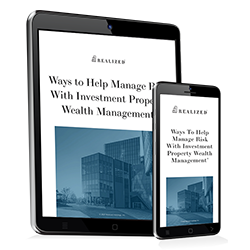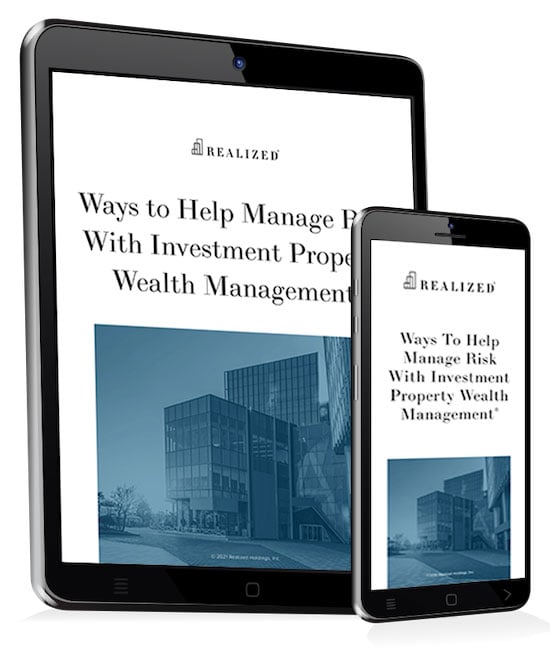
Part 2 in the Realized Series Risk in Real Estate Investments
Part 1: Risk In Real Estate Investments
Part 3: 8 Ways to Mitigate Risk in Real Estate Investing
When it comes to investing in real estate, I don’t play fair. And I encourage those reading this not to play fair either.
To be clear, I am not condoning anything illegal or unethical. I’m talking about “fair” in its economic sense. In economics, a game is “fair” when the cost to play or participate is equal to the Expected Payoff, where:
Expected Payoff = (chance of win x payoff for win) + (chance of loss x payoff for loss).
Most people, if they can determine the odds, will not knowingly partake in a fair “game” with their money. Take the classic example where a person is offered an opportunity to wager $100 on a coin flip. If it lands heads, they win $100, if it lands tails, they lose $100. Assuming 50% chance that the coin will land on heads and 50% chance on tails, the Expected Payoff is zero = (50% x $100) + (50% x - $100). So, in theory, a rational person should be indifferent to playing this game since they are expected to end up in the same place financially. In practice, however, you may not have many takers.
Now let’s make things more interesting: assume the odds are now 60/40 in your favor, but the cost to play is $100,000. The Expected Payoff is now $20,000 (60% x $100,000) + (40% x - $100,000). What would you do then? A rational investor should be willing to play. But, as the dollars at stake get larger and larger, people won’t necessarily play statistically favorable games. With a 40% chance of losing $100,000, most investors will (consciously or subconsciously) place more value on limiting their potential downside and less on maximizing the Expected Payoff. Think of this as losing hurts more than winning feels good.
So what does this have to do with investing in real estate? Real estate investment is risky. The dollars at stake are often significant. The losses can really hurt. However, through proper risk management, a diligent investor can “stack the deck” in their favor.
In the context of investing, risk management can be thought of as a process to reduce the probability, and limit the severity, of unfavorable outcomes. The risk management framework is a systematic and continuous process consisting of five steps:
Step 1: Identify The Significant Loss Exposures
If you are having trouble recognizing risks of a potential investment, you are not alone. This step is where many investors we work with have the most difficulty. At Realized, many of the individual investors we work with are not “in the business” of real estate investing everyday. For this reason, they often don’t have the data necessary to effectively evaluate an investment’s downside loss exposure. It’s not that they don’t understand risk, they just may not know what to look for.
Every deal is different, and unlike the coin flip example, it’s impossible to determine all the risks involved, let alone the odds of each. The important thing is to identify the major risks that could affect a specific investment. For example, what will the losses in value and income be if a major tenant doesn’t renew? Is demand for your property tied to a single industry? Is your location insulated from new competition? How would rising interest rates impact your investment?
Step 2: Estimate Potential Loss Probability And Severity
In simple terms, what is the probability that an unfavorable event may occur; and what is the severity in losses you could sustain if it happens? The problem, as we discussed in Part 1 of our Risk Management series, is that quantifying risk in real estate is difficult. There is no actuarial table to consult or bell curve distribution to study. Without statistical data, investors may turn to industry data or other resources in order to make an informed judgment about the probability of losses. For example, use an industry rule of thumb of a 65% to 70% renewal probability for your major tenant since specific statistical data is not available at the property level.
The expected severity of an unfavorable occurrence is even more difficult to quantify. However, with some diligence, common sense and a willingness to accept the reality that unexpected events do happen, an investor can estimate a range of potential losses. Ironically, it’s often the low probability events that present the greatest risk severity in losses.
Step 3: Identify Risk Management Methods
Whereas investors cannot completely eliminate all risks, they may be able to mitigate many. In Part 3 of this series Risk in Real Estate Investments, we will outline eight (8) basic techniques an investor can utilize to manage real estate investment risk.
Step 4: Select the Technique for Mitigating Each Major Risk Identified
While Step 3 is knowing the tools available, Step 4 is choosing the right tool for the job. Again, for more on the eight (8) techniques for managing investment risk, please see Part 3 of this series Risk in Real Estate Investments.
Step 5: Implement and Monitor.
Just because an investor implements strategies to manage risk, does not mean they can set it and forget it. To the contrary, risk management is a continuous process, investors need to periodically re-evaluate major risks and the effectiveness of the risk management techniques they are using. If the risk mitigation techniques are not working as planned, the investor should make changes accordingly.
Over time investors should be diligent in watching for additional major risk factors that may surface after investing in a property. A lease that matures in five years, probably wasn’t much of a concern, but without a risk mitigation strategy in-place, it may be a major problem four and a half years later.
Life is uncertain and risk can never be eliminated, but there are ways to reduce risk. A framework for identifying and understanding these is helpful. When it’s your money on the line, you’ll be happy to move the odds in your favor.
Realized will prepare a 1031 Investment Plan, which among other valuable insights helps you understand your individual risk profile and the potential risks of real estate investments you may be considering*. With nearly 60 years of collective experience and $5.0 billion of real estate transactions behind us, the Realized team has the expertise and the tools to assist in understanding the risks and returns of investments. Visit our Marketplace to view a variety of tax-efficient, 1031-qualified real estate investment opportunities. Offerings are pre-packaged, allowing accredited investors to efficiently compare multiple opportunities.
*Realized 1031 is not an Investment Adviser and does not provide investment advice. Any information contained in the 1031 Investment Plan or other materials is for illustrative purposes only. Securities offered through the Realized Marketplace are exclusively through WealthForge Securities, LLC, a registered broker/dealer and member of FINRA/SIPC (“WealthForge”). Certain members of Realized are registered representatives of WealthForge.



